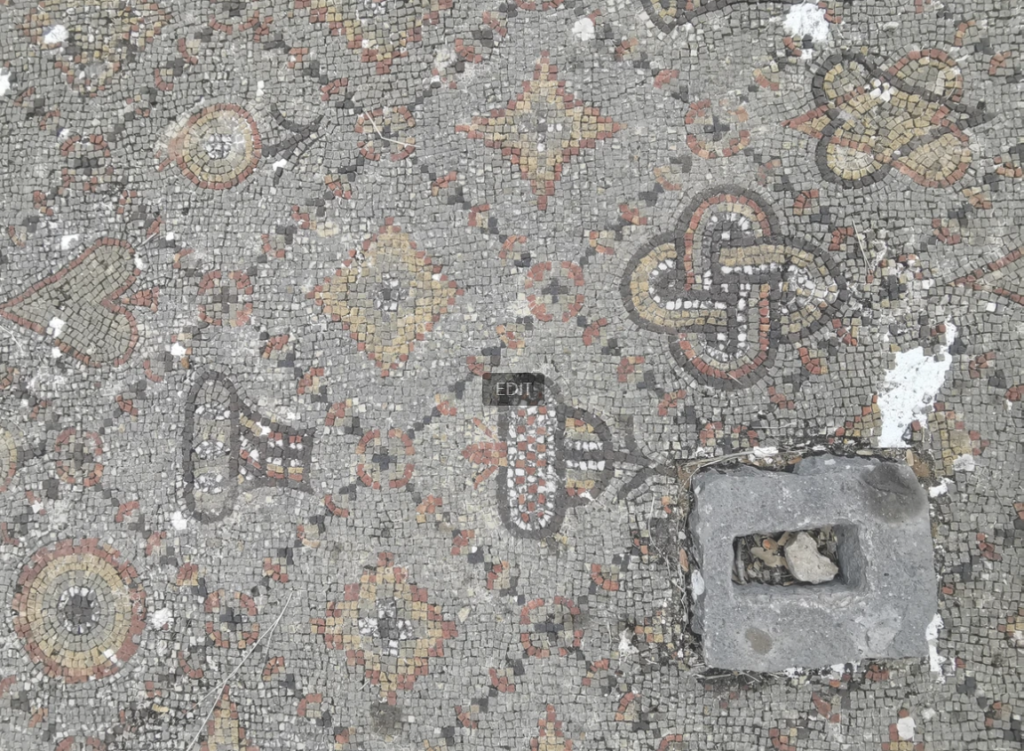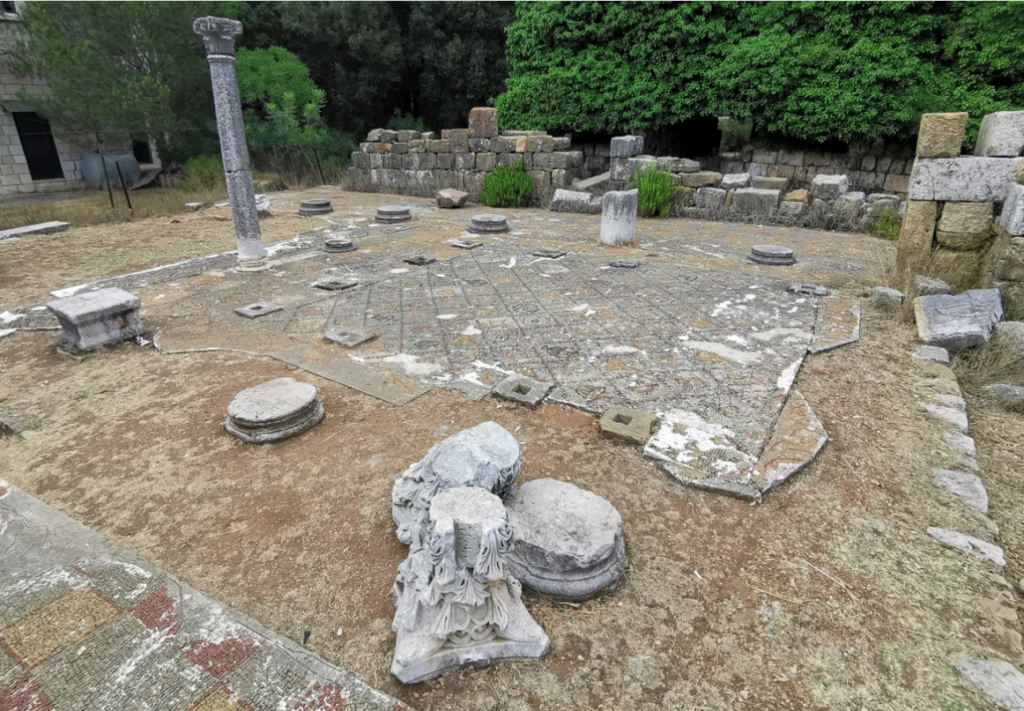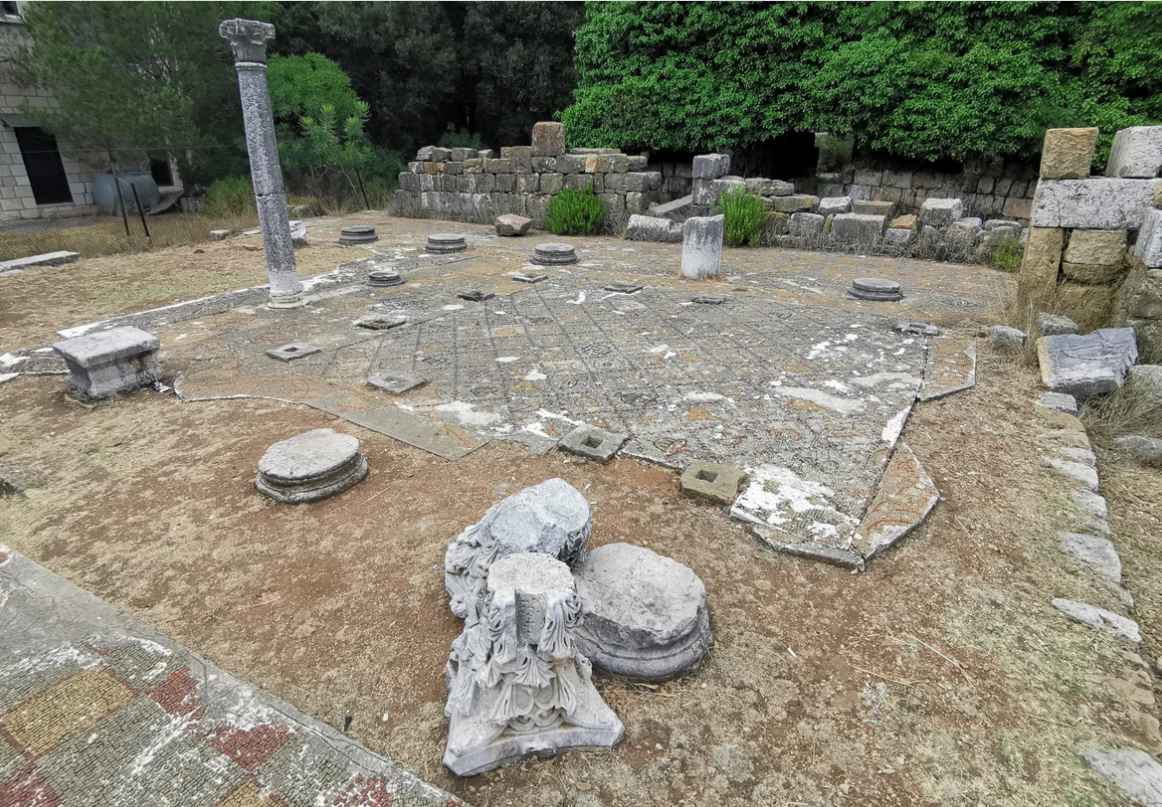The archeological site of Deir El Qalaa provides a glimpse about rural life during antiquity in Mount Lebanon.
Etymology
Deir El Qalaa – “The Monastery of The Fortress” is the name given to a monastery that was built near the site of a former crusader fortress.
Location
Deir El Qalaa site is located in Beit-Mery village, at an altitude of 750m, nestled on a hill that overlooks the city of Beirut.
It is said that the village was the summer location of the Roman rulers of Lebanon.
Timeline
1st century BC – 1st century AD – Construction of the temple structures
5th century AD – Development of a Byzantine settlement around the temple site
1125 AD – Construction of a crusader fortress by Baldwin II, King of Jerusalem
1750 AD – Construction of “The Monastery of The Fortress”
Archeological site
Deir El Qalaa archeological site houses the remnants of temples, settlements, a monastery, a Byzantine church, a bath and several olive/wine presses.
The residential area – the remnants of houses, dwellings and streets can be identified on site. Archeologists date these settlements to the Byzantine era, with minor structures going back to the early Roman era.
The Roman bath – one of the best preserved thermal baths in Lebanon can be found in Deir El Qalaa. One can clearly see the different sections of the bath, such as the hot and cold rooms, the boiler room and the pillared chamber beneath the bath’s floor.
The Byzantine Church – this 5th century structure features a well decorated and preserved mosaic floor. One can find the remains of a colored mosaic pavement, and the mosaics of the side aisles, in one piece, are made up of geometric motifs (swastika, Solomon’s knot, forked cross, etc.) included in an alternating set of diamonds and circles.
The Temples – the remnants of 3 temples can be identified on site.
The first temple: open to the north-west and overlooking Beirut, few sections of the building remain visible due to the construction of “The Monastery of The Fortress” on top of the temple structure. One can notice the megalithic foundations of the building, as well as a couple of imposing columns.
The temple was dedicated to Baal Marqod (Lord of Dances or Lord of Shaking), who kept safe the Phoenician cities from earthquakes that were shook time after time.
The second temple: the structure is a tetrastyle prostyle chapel of modest dimensions, open to the north-west, like the great temple which dominates it. The temple was dedicated to the Roman Goddess Juno.
The third temple: the foundation of a 3rd temple was discovered next to the chapel of Juno. The deity of this temple is still unknown.
Karim Sokhn
Tour Operator & Tour Guide
References:
Beirut Through The Ages – Nina Jidejian
Les Mosaiques Protobyzantines Du Liban – Nada Helou
La vie Religieuse Au Liban Sous L’Empire Romain – Julien Aliquot
Vestiges Archeologiques du Liban – Jean-Marie Blas De Robles / Dominique Pieri / Jean-Baptiste Yon



